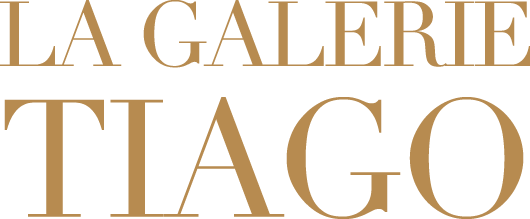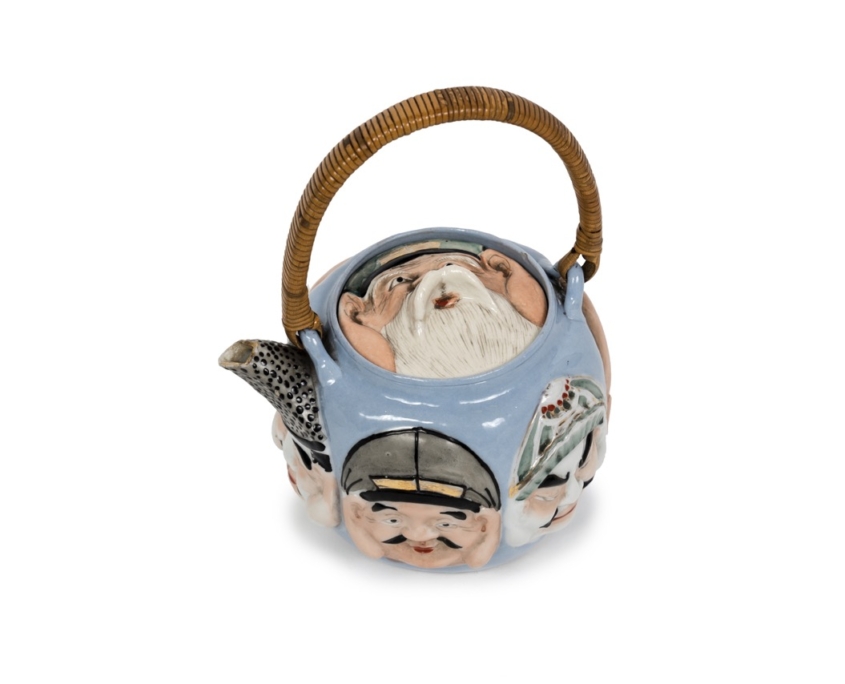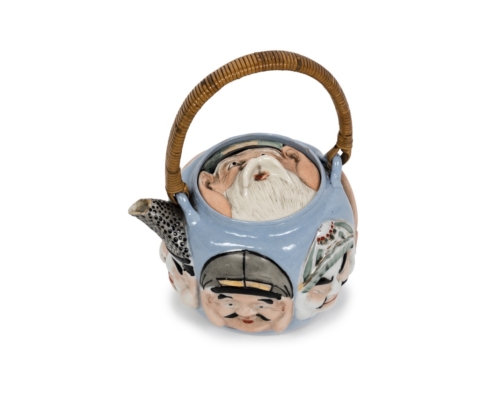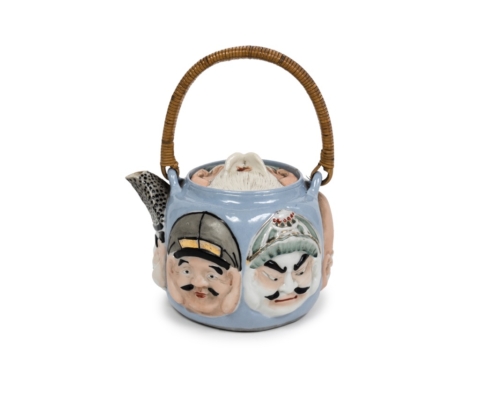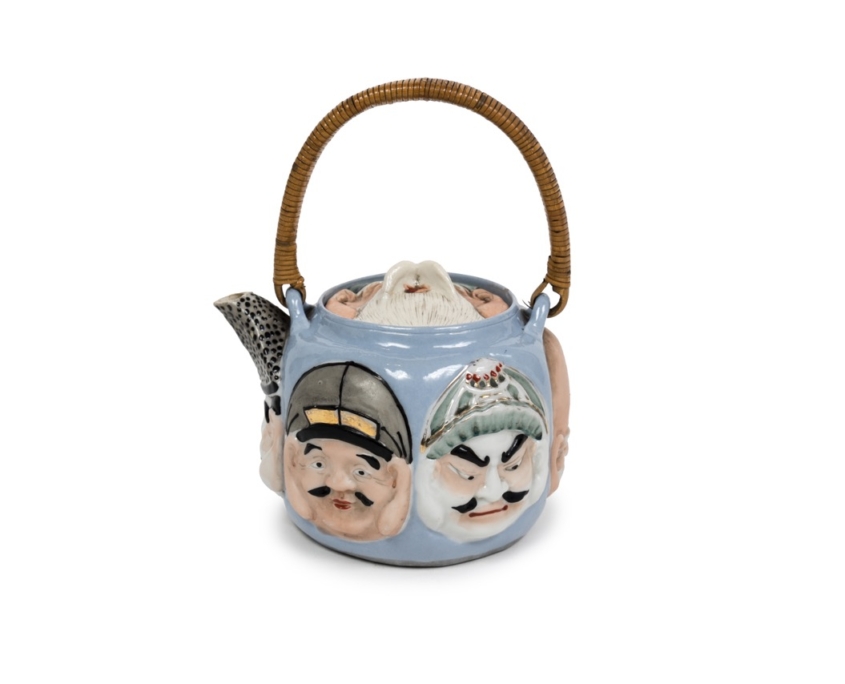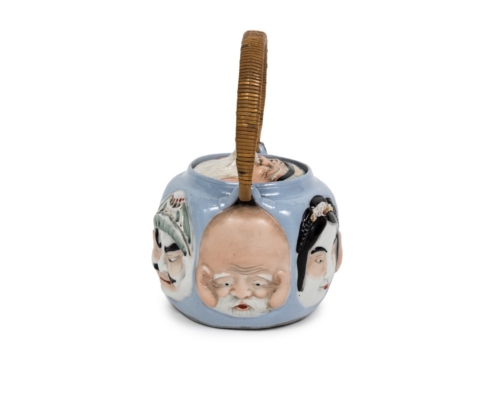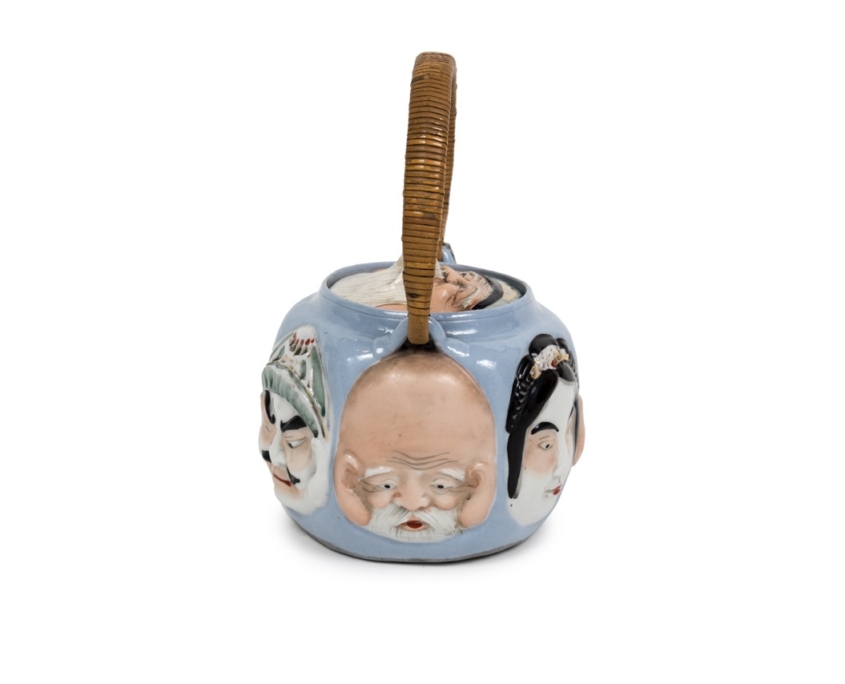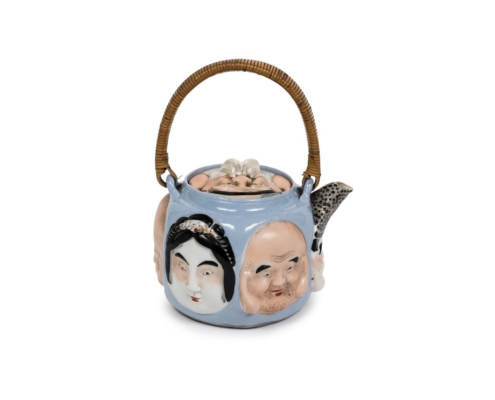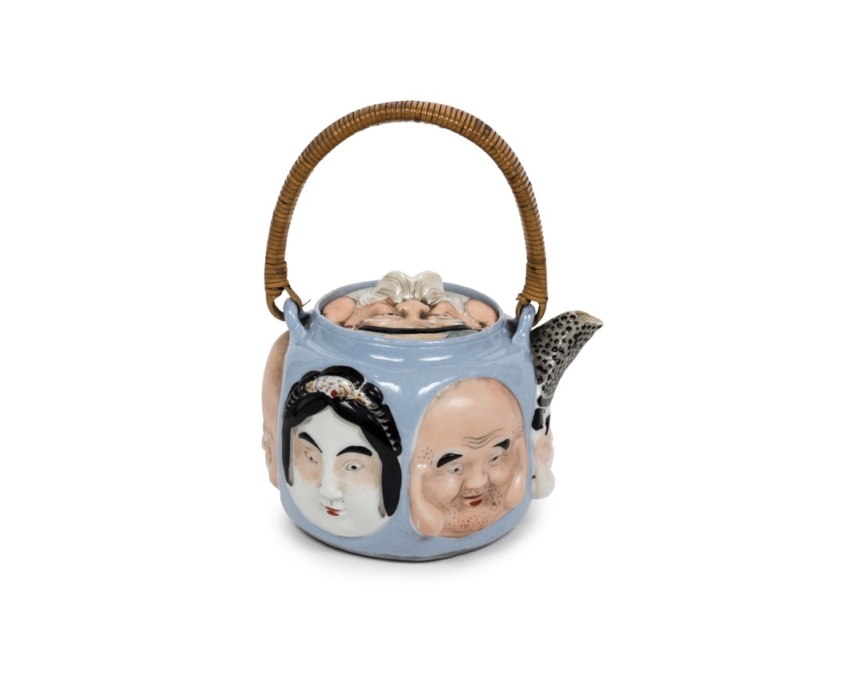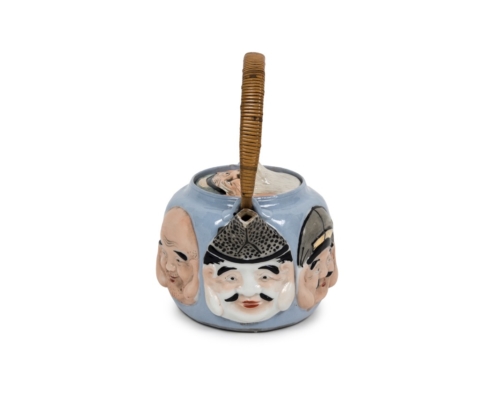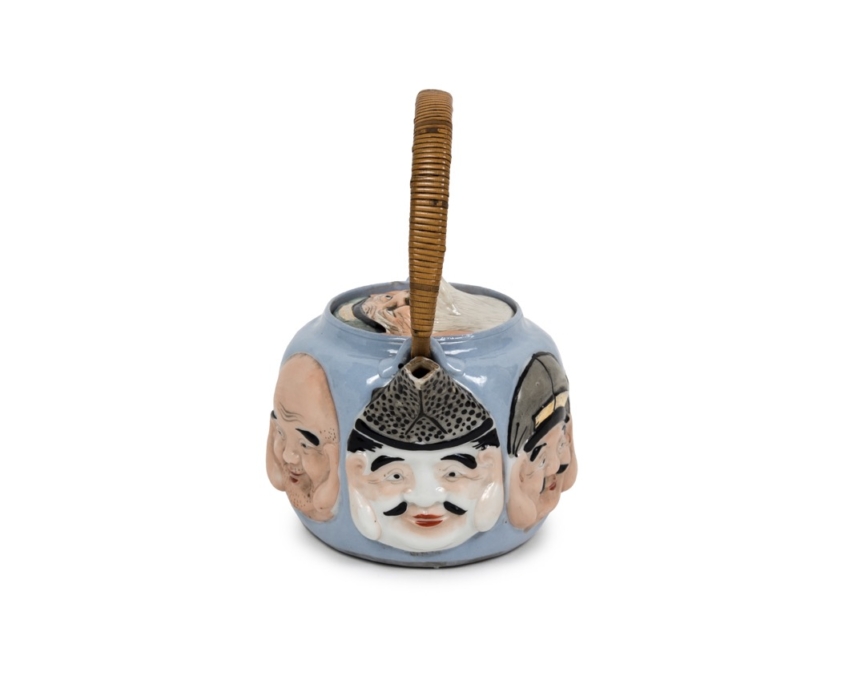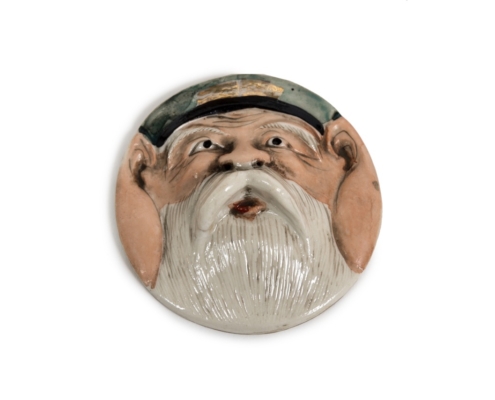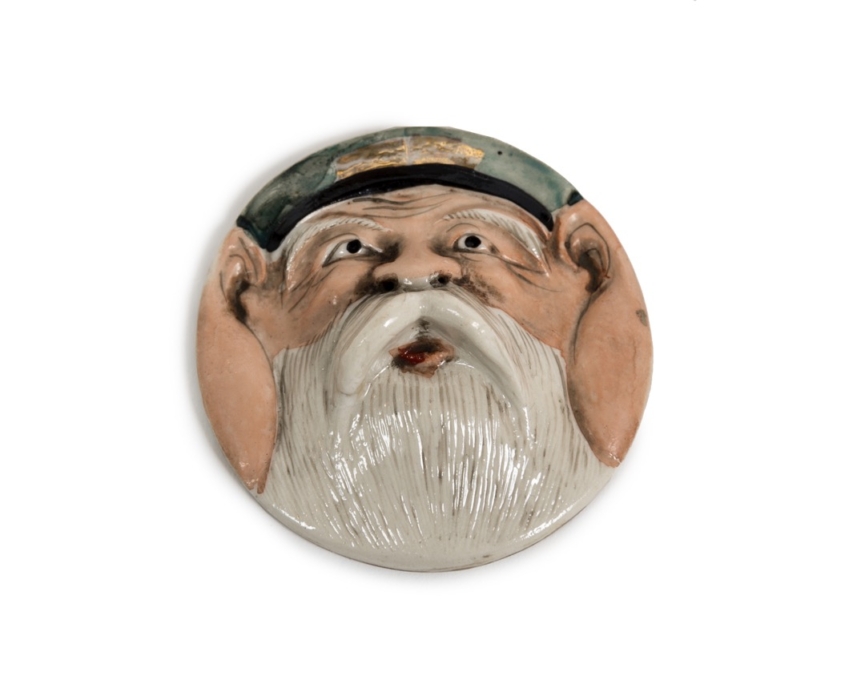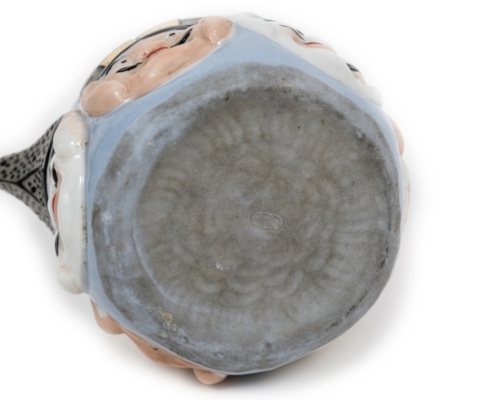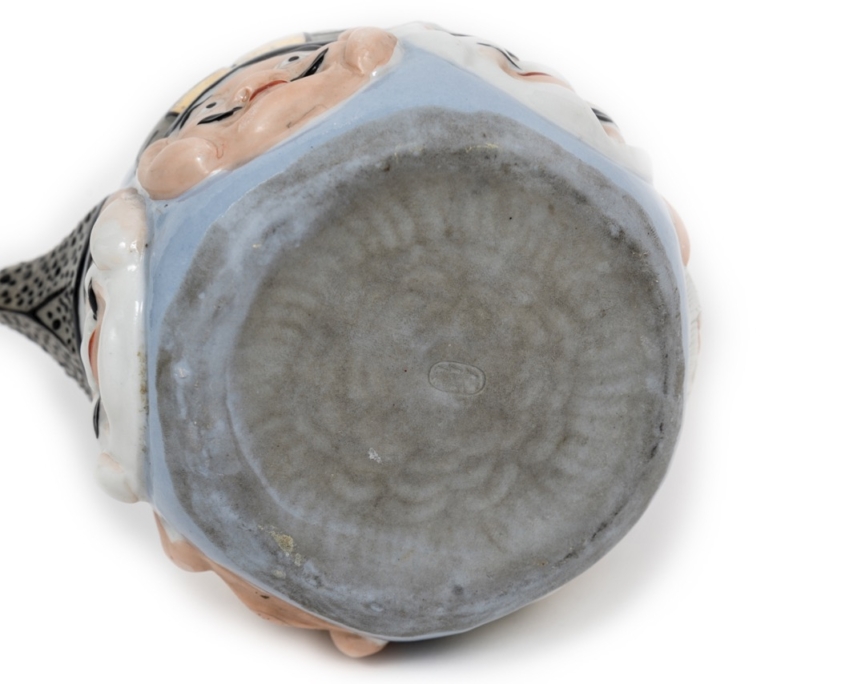The Seven Gods of Happiness are skillfully arranged, combining iconographic and physical characteristics of the teapot.
The lid features Jurôjin, god of longevity and wisdom, depicted as on old man. His moustache is used to grip the lid. The pointed cap of Ebisu, deity of peach trees and agriculture, serves as the spout. To his right, Hotei, deity of commerce and good health, is shown bald and smiling. Next, Benzaiten or Benten, divinity of the arts, eloquence end erudition, the only woman in the group. At the back of the teapot, Fukurokuji, divinity of wealth and longevity, recognizable by his oversized forehead. To his right, Bishamonten, divinity of war and good fortune, with a frown face and a armor helmet. The last one is Daikokuten or Daikoku, deity of wealth and agriculture, wearing a bonnet.
Banko pottery is a type of Japanese pottery from the homonymous workshop in Yokkaichi (Mie prefecture), central Japan. It was created by Nunami Rôzan, a wealthy merchant, in the mid-18th century during the Edo period. Fascinated by the art of the Way of tea, he wished to dedicate his own pottery to it. The name banko comes from the expression “bankofueki”, with which he stamped each of his creations, meaning “constancy and eternity”. With this signature, he hoped his creations would be appreciated for many generations. Although his workshop endured, his art was recognized long after his death. From the end of the 19th century and especially in the early 20th century, rather grotesque banko pottery was distributed in the West. The United States accounted for 60% of exported production, notably via the A. A. Valentine’s store on the 5th Avenue in New York, specializing in Oriental and Far Eastern objects.



